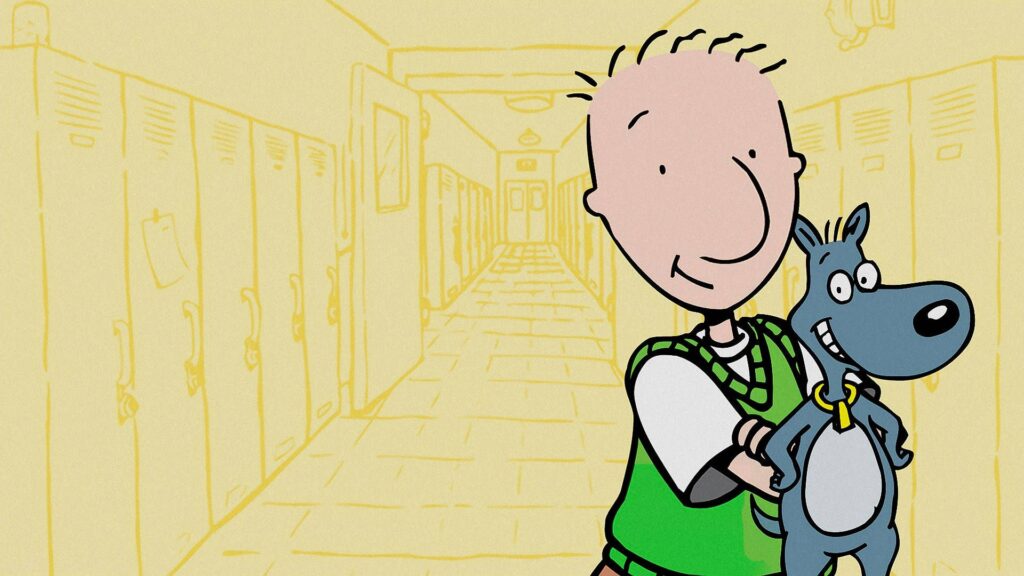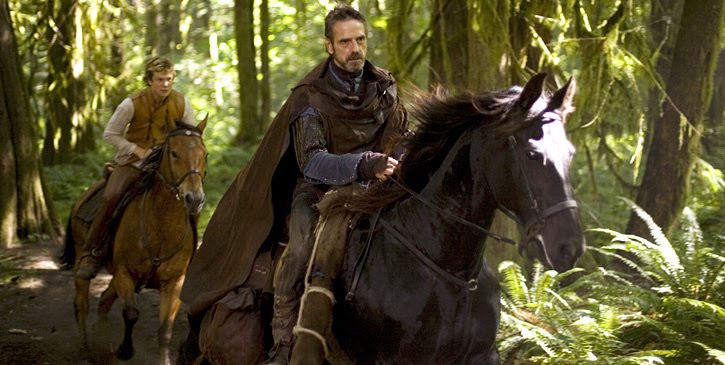
Alright, everyone, welcome back to the channel, and today, we’re doing something a little bit… different. Now, usually, I’m here to talk about cars, the insane quirks and features of various automotive marvels, but today, we’re taking a sharp left turn into the world of animated sitcoms. Because, let’s be honest, few things have as many hidden depths, intricate designs, and fascinating ‘features’ as a classic cartoon, and ‘Doug’ is absolutely brimming with them. So, let’s get started, because there is *so much* to cover with this show.
Yes, we’re going to apply the full, unfiltered DeMuro treatment to the beloved series ‘Doug.’ Forget horsepower and torque; we’re talking about character development, narrative structure, and the almost obsessive attention to detail that went into creating a fictional world that felt incredibly real. From its humble beginnings in a sketchbook to becoming one of the most iconic animated series of its era, ‘Doug’ offers a wealth of unique elements that are just begging for a deep dive. It’s a show that, on the surface, seems simple, but beneath that veneer lies a surprisingly complex and thoughtful creation.
And when I say deep dive, I mean *deep*. We’re not just scratching the surface here; we’re pulling back the curtain on the creative process, examining the motivations behind its distinctive character designs, and even exploring the subtle narrative choices that made ‘Doug’ so relatable and enduring. You might think you know ‘Doug,’ but trust me, by the end of this, you’ll be seeing Bluffington and its residents in a whole new light. So, buckle up, because this is going to be… well, it’s going to be a lot of fun. Let’s explore these fascinating elements, starting with the very foundation of the show itself.

1. **The Genesis Story: Jim Jinkins’ Autobiographical Blueprint**First off, let’s talk about the absolute foundation of ‘Doug,’ because like so many truly great things, it started with a single vision. The series was created by animator Jim Jinkins, a man born in Richmond, Virginia, in 1953, who harbored a lifelong fascination with drawing. His journey through animation and filmmaking at Ohio State University eventually led him to a job at PBS in their children’s programming unit, laying the groundwork for what was to come. This wasn’t some corporate concoction; this was a personal project, deeply rooted in its creator’s life experience.
Now, here’s a real quirk: Jinkins initially sketched the character of Doug quite spontaneously, without any conscious intention of creating a self-portrait. However, in the 1980s, as he developed an autobiographical character named Brian, he eventually changed the name to Doug, precisely because it was so common. He started to see the character as his “alter-ego,” filling his sketchbooks with Doug in all sorts of silly and occasionally cynical scenarios. This profound connection meant that the character wasn’t just a drawing; it was an extension of Jinkins himself, ensuring an unparalleled level of authenticity.
The genesis of Bluffington, the show’s central location, is equally fascinating and deeply personal. After a rough patch in 1984 — a difficult breakup and injuries from a biking accident — Jinkins experienced a shift in perspective. He desired “to create a place where there was no overdue rent and no delinquent phone bills.” This aspiration led him to doodle, forming the initial basis for the comforting, yet often challenging, town of Bluffington. The character’s early designs were further solidified with his friend David Campbell at a small Mexican restaurant in New York, with Jinkins crediting the character’s unique, odd coloring choices to a “margarita stupor.” It’s an amazing origin story for an entire fictional universe.
Initially, Doug wasn’t even destined for television; Campbell suggested turning it into a children’s book titled ‘Doug Got a New Pair of Shoes.’ However, this concept faced rejection from every publishing house in the city, though Simon & Schuster showed interest before management changes stalled the deal. So, before it became the animated phenomenon we know, Doug was already battling rejection, much like his on-screen counterpart. His very first animated appearances were actually in a 1988 Florida Grapefruit Growers commercial and a 1989 promotional bumper for the USA Network, showing early signs of his appeal.
The real breakthrough came when Nickelodeon, seeking to develop its first original animated series and find creative auteurs, entered the picture. Jinkins, who had previously worked at the network when it was called Pinwheel in the late 1970s, scheduled a meeting with executive Vanessa Coffey to present his book prototype. Coffey’s reaction was legendary: she ran out of the room, not in dismissal, but to excitedly inform her boss, “This [Jinkins] guy is the real deal, and we’re taking him to pilot.” This swift approval demonstrates the immediate impact and clear potential Doug had.
From that initial pilot, titled ‘Doug Can’t Dance,’ Jinkins, employing New York voice artists and writers, created one of three six-minute pilots chosen to launch Nickelodeon’s debut animated series, or Nicktoons. It was a resounding success, testing highest among eight shown to test audiences, scoring a perfect eight points. The lengthy contract development, almost a year in the making, included a crucial clause: Jinkins ensured he could take the series to another network if Nickelodeon didn’t complete the full order. This foresight proved invaluable later on. Jinkins and Campbell then founded Jumbo Pictures in July 1990 to produce the show, a remarkable feat of independent production at the time, with Coffey playing a pivotal role in bringing it to air. The pilot’s success led to a greenlight for the first season of 26 segments, paired up to form 30-minute programming blocks, solidifying Doug’s place in animation history.

2. **Doug Funnie Himself: The Relatable Everykid with a Vivid Imagination**Now, let’s talk about the main character himself, Douglas ‘Doug’ Funnie, because this is where the show’s genius truly shines. At 11, later 12, years old, Doug embodies the quintessential adolescent experience: he yearns to be “another face in the crowd.” Yet, in a fantastic quirk of character, his vivid imagination and strong sense of right and wrong invariably make him stand out. This internal conflict between wanting to blend in and being inherently unique is a core feature that makes him incredibly relatable to anyone who’s ever been through those formative years.
A key ‘feature’ of Doug’s character, and indeed the show’s narrative structure, is his journal. He meticulously records his experiences in it, treating it as an autobiography. This journal serves as the primary device for the series’ narration, giving us direct access to Doug’s inner thoughts, anxieties, and triumphs. From learning to dance to navigating the trauma of a bad haircut, these entries provide a consistent, personal, and often humorous lens through which we view his predicaments in Bluffington. It’s a brilliant way to explore the often-tumultuous landscape of early adolescence.
Doug, along with his family—his parents Theda and Phil, his older sister Judy, and his faithful dog Porkchop—relocates from the rather unfortunately named Bloatsburg to Bluffington after his dad secures a job promotion. This transition to a new town immediately thrusts Doug into classic “new kid” scenarios, further amplifying his struggles with fitting in and finding his place. Bluffington itself, while in the United States, isn’t tied to any specific state, but it’s loosely based on Richmond, Virginia, Jim Jinkins’s own hometown, adding another layer of autobiographical authenticity to the setting.
Character-wise, Doug is depicted with a highly relatable suite of traits: shy, insecure, self-conscious, and often gullible. His biggest struggle, more often than not, revolves around dealing with his pervasive “fear of failure.” This isn’t a superhero; this is an ordinary kid grappling with everyday anxieties, making him profoundly human. But amidst these vulnerabilities, Doug also possesses a surprising array of talents, including writing, drawing, playing the banjo, and a genuine knack for caring for animals, particularly his beloved dog, Porkchop.
The original voice behind Doug, Billy West, lent an incredible depth to the character for seasons 1-4. Initially, creator Jim Jinkins was reluctant about West’s assignment by executive Vanessa Coffey, but he eventually came to view it as “the best possible voice for the character.” West himself noted the profound connection, stating, “There’s a lot of me in there, because I’m going through my own experiences in there, because I have a conscience.” This personal investment from the voice actor further cemented Doug’s emotional resonance, allowing his internal struggles and moral compass to truly shine through. His “unparalleled sense of morality,” as the context highlights, is often the very thing that makes him stand out, even as he yearns for anonymity, creating a compelling central tension in every episode.
3. **Porkchop: The Anthropomorphic Canine Sidekick and Conscience**Next up, we have a character who, without saying a single human word, manages to be one of the most expressive and integral parts of Doug’s world: Porkchop. Now, this isn’t just any dog; this is Doug’s anthropomorphic pet Bull Terrier, and his list of ‘features’ is quite extensive. He’s not just a companion; he’s a true sidekick, accompanying Doug almost everywhere he goes, often acting as a silent but powerful sounding board for Doug’s internal dilemmas. It’s a fantastic example of non-verbal storytelling.
One of Porkchop’s most defining quirks is his unique role in Doug’s decision-making process. The context explicitly states he “sometimes assists Doug in making decisions and acts as his conscience.” This isn’t just an adorable pet; he’s an active participant in Doug’s moral journeys, often providing a physical manifestation of Doug’s own internal struggles or the subtle nudge he needs to do the right thing. It’s a brilliant way to externalize a character’s inner thoughts without resorting to exposition, and it’s a feature that makes their bond incredibly special and unique.
And talk about talents! Porkchop is “very talented in many things such as acting,” which is a wonderful little detail that pops up in various episodes. This isn’t just a one-off gag; it’s a consistent characteristic that adds another layer to his already rich personality. His living arrangements also offer a quirky detail: in the Nickelodeon series, he lives in an igloo-shaped doghouse, which then transforms into a tipi in the Disney series. These subtle changes in design are fascinating little ‘features’ for eagle-eyed fans to spot, marking the shift in production.
His backstory is also rather endearing. During a Christmas special, it’s revealed that Doug received Porkchop as a Christmas gift. And in a true moment of canine heroism, Porkchop once saved Beebe Bluff’s life when she was on the verge of falling through thin ice. This isn’t just a dog; he’s a hero! Before his starring role in ‘Doug,’ Porkchop, alongside Doug, made his first appearances in ID spots for the USA Network children’s block, USA Cartoon Express, demonstrating his early appeal and establishing their inseparable duo from the very beginning. Fred Newman provides Porkchop’s distinctive vocalizations, adding to his unique character.
4. **Skeeter Valentine: The Blue-Skinned Best Friend and Honking Oddity**Alright, let’s move on to Doug’s best friend, Mosquito “Skeeter” Valentine, a character who truly embodies the show’s commitment to distinctive and memorable design. His most obvious ‘feature’ is, of course, his vibrant blue skin. This bold color choice, a result of Jim Jinkins’s eclectic use of 200 design markers, was not arbitrary; as Jinkins later explained, it “came to symbolize the irrelevance of race.” This is a profound, understated message embedded right into the character’s visual identity, making Skeeter far more than just a quirky friend.
Skeeter is, in many ways, a foil to Doug. While Doug is shy and often self-conscious, Skeeter is described as a “normal boy who is more sociable than Doug.” This dynamic provides a crucial balance to their friendship, allowing Skeeter to often pull Doug out of his shell or introduce him to new experiences. A delightful ‘quirk’ of Skeeter’s character is his tendency to make “occasional honking noises,” a unique vocal tic that makes him instantly recognizable and adds a layer of endearing oddity to his persona. It’s a small detail, but it speaks volumes about the show’s willingness to embrace the peculiar.
Having lived in Bluffington for some time, Skeeter plays a vital role in helping Doug acclimate to his new hometown. For instance, in the series premiere, Skeeter is instrumental in guiding Doug through the somewhat intimidating process of ordering food at the popular Bluffington restaurant, Honker Burger. This pivotal moment solidifies their friendship and establishes Skeeter as Doug’s knowledgeable and supportive guide in this new, sometimes overwhelming, world. It’s a classic example of a character serving a practical narrative function while also developing a deep emotional bond.
The inspiration behind Skeeter is another fascinating ‘feature’ of the show’s autobiographical roots. Jim Jinkins based the character on his own high school best friend, Tommy Roberts. This direct connection to Jinkins’s personal life infuses Skeeter with a genuine sense of camaraderie and loyalty, making the on-screen friendship feel incredibly authentic. The fact that he’s voiced by Fred Newman, who also contributes to the show’s unique soundtrack, further integrates him into the distinct audio landscape of ‘Doug.’
Now, here’s a curious post-series ‘quirk’: much online debate ensued over Skeeter’s race, with some viewers interpreting his traits as stereotypical of African Americans. Jinkins, however, stated that he didn’t envision this discourse, and reiterated that the diverse, wild colors used for characters like Skeeter were meant to symbolize “the irrelevance of race.” This makes Skeeter not just a great friend but a subtle, yet powerful, statement on inclusivity and the superficiality of outward appearance, adding unexpected depth to a children’s cartoon character.

5. **Patti Mayonnaise: Doug’s Enduring Crush and Talented Athlete**Let’s shift our focus to Patti Mayonnaise, a character who is not only Doug’s primary love interest but also a force of nature in her own right. Patti is consistently portrayed as an “intelligent, lovely, talented, and athletic girl.” These are not just descriptors; they are ‘features’ that establish her as a well-rounded and admirable individual, making it entirely believable why Doug would be so smitten with her. Her multifaceted personality elevates her beyond a mere object of affection; she’s a compelling character in her own right.
As Doug’s “female best friend and love interest,” Patti holds a central position in his emotional world. Her character is a masterclass in combining admirable qualities with relatable flaws. She is “kind and helpful,” consistently demonstrating a supportive and caring nature towards Doug and her other friends. However, in a truly DeMuro-esque examination of ‘quirks,’ she also has distinct weaknesses, such as “a tendency to be competitive,” “being gullible,” and a propensity “to anger easily if pushed too far.” These imperfections add depth and realism to her character, preventing her from becoming a one-dimensional idealized figure.
The inspiration for Patti, much like many characters in ‘Doug,’ comes directly from Jim Jinkins’s personal history. He based her on his “adolescent crush from junior high and high school.” This autobiographical connection lends a genuine emotional weight to Doug’s ongoing attempts to impress her and win her affection. Furthermore, her memorable name, Patti Mayonnaise, was culled from two girls from his childhood, Pam Mayo and a girl named Patty. This blend of real-life inspiration and creative naming gives her character an endearing, almost nostalgic quality.
Patti’s consistent presence throughout the series as the object of Doug’s affection, combined with her strong, independent personality, makes her one of the show’s most enduring and beloved characters. She’s not just a goal for Doug; she’s an active participant in his life, offering friendship, challenges, and moments of profound connection. Her voice, provided by Constance Shulman, contributes significantly to her grounded yet spirited portrayal. As Shulman herself noted later, the magic of the original voice sessions was palpable, highlighting the collaborative spirit that brought Patti to life.
6. **Roger M. Klotz: The Green-Skinned Bully with a Hidden Depth**Every hero needs an antagonist, and in Bluffington, that role is masterfully filled by Roger M. Klotz. Roger is introduced as Doug’s “green-skinned nemesis” and the quintessential “school bully.” But, and this is a crucial ‘quirk,’ he’s not always depicted as a genuinely malicious bully in the traditional sense. Instead, his antagonism often manifests through “mischievous tendencies” and a penchant for “playing practical jokes on characters.” This nuance prevents him from being a purely evil figure, making him a more complex and, dare I say, almost charming antagonist at times.
One of the more subtle ‘features’ that informs Roger’s character is his age. It’s explicitly mentioned that he’s older than others in his class, having taken “three years to graduate from sixth grade.” This detail quietly suggests underlying struggles or challenges that contribute to his often-abrasive personality, adding a layer of empathy to a character who might otherwise be purely villainous. It’s a clever way to hint at a more complicated internal life, even for the resident troublemaker.
And here’s a truly unexpected ‘quirk’: Roger harbors a crush on Doug’s older sister, Judy. In certain episodes, he actively “tries to woo her,” which creates some hilarious and awkward situations. This surprising romantic interest adds another dimension to Roger’s character, showing a softer, more vulnerable side that contrasts sharply with his usual bullying persona. It’s these kinds of unexpected interactions that make the world of ‘Doug’ feel so rich and interconnected, demonstrating that even antagonists have complex motivations.
Roger’s economic status undergoes a significant transformation between the Nickelodeon and Disney series, a fascinating ‘feature’ that reflects real-world shifts in wealth. In the Nickelodeon run, Roger and his divorced mother live in a trailer park, adding a layer of social commentary to his character. However, in the Disney series, his family becomes wealthy due to a “real-estate deal struck between the owner of the trailer park and the Bluff family.” This change not only alters his social standing but also highlights the impact of external forces on a character’s circumstances, even in an animated world.
His origins are, once again, deeply rooted in Jim Jinkins’s childhood. Roger was inspired by a bully who lived in the same neighborhood as Jinkins, with the creator adopting his neighbors’ last name, Klotz, for the character. This personal connection imbues Roger with an authentic, if sometimes irritating, presence in Doug’s life. Over the show’s run, his voice was provided by Billy West in the Nickelodeon series and Chris Phillips in the Disney series, marking another subtle, yet noticeable, shift in the character’s presentation across the different productions.
Alright, everyone, welcome back, because if you thought we were done uncovering the incredible depth of ‘Doug,’ you were sorely mistaken. We’ve peeled back the layers on the main characters and the show’s genesis, but now it’s time to expand our scope, to look at the meticulously crafted world of Bluffington itself, its vibrant supporting cast, the groundbreaking auditory experience, and the significant shifts that shaped its legacy. We’re talking world-building, creative evolution, and the enduring messages that cemented ‘Doug’ as a timeless piece of animation. So, let’s get into the next set of ‘quirks and features’ that make this show truly special.
7. **Bluffington’s Rich Tapestry: The Ancillary Characters that Built a World**Moving beyond Doug’s immediate circle, let’s talk about the incredible ensemble of ancillary characters who truly flesh out the world of Bluffington, giving it that lived-in, authentic feel. These aren’t just background players; they each possess their own distinct ‘quirks and features’ that contribute significantly to the show’s charm and narrative possibilities. Characters like Beebe Bluff, Judy Funnie, and Mr. Bud Dink are far more than just supporting roles; they’re vital components in Doug’s journey through early adolescence.
First up, we have Beebe Bluff, the heiress to the formidable Bluff family fortune, a lineage so prominent the entire town is named after them! Now, you might expect an heiress to be stuck-up, but Beebe is a fantastic ‘feature’ of the show’s nuanced character writing. Despite possessing a certain air of superiority, she surprisingly maintains genuine friendships with Patti Mayonnaise and her other classmates, showcasing a complexity that makes her more than just a rich girl stereotype. In a truly memorable episode, Doug even shares his first kiss with her, though it’s explicitly noted to be out of gratitude, not romance, reinforcing her crush on Skeeter.
Then there’s Judy Funnie, Doug’s older sister, a character brimming with dramatic flair and intellectual ambition. Judy is a brilliant ‘quirk’ in the Funnie household, often seen in her signature purple and black attire, rarely without her beret or sunglasses, embodying a strong beatnik personality. Her attendance at the Moody School, a specialized institution for artistically talented teenagers, perfectly explains her theatrical leanings. Doug often dreads her performances at Bluffington Elementary, fearing the inevitable embarrassment, a deeply relatable sibling dynamic that adds to the show’s realistic portrayal of family life.
And let’s not forget Mr. Bud Dink, Doug’s purple-skinned, slightly odd, and perpetually well-meaning next-door neighbor. Mr. Dink is a treasure trove of ‘quirks and features,’ from his dimwitted advice to his penchant for purchasing anything he deems “very expensive,” a running gag that’s always good for a chuckle. His last name is a clever acronym: “Dual Income, No Kids,” which hilariously explains his extravagant spending habits. He’s Doug’s go-to for advice, even if that advice is sometimes completely useless, and his wife, Tippy, later becomes the mayor of Bluffington, a fantastic narrative development that further integrates him into the town’s fabric.
8. **The Auditory Universe: Doug’s Groundbreaking Musical Score and Sound Design**Now, let’s shift gears from visual ‘features’ to auditory ones, because ‘Doug’ isn’t just a treat for the eyes; it’s a phenomenal experience for the ears, thanks to its truly groundbreaking musical score and sound design. This isn’t your typical cartoon music; this is an integral part of the show’s identity, crafted by the incredibly talented Fred Newman, who also voiced Porkchop and Skeeter. It’s a testament to the show’s creative boldness that it dared to be so audibly distinctive.
One of the most defining ‘quirks’ of ‘Doug’s’ soundscape is its unique a cappella soundtrack, predominantly featuring scat singing and ingenious mouth noises. Creator Jim Jinkins himself recounted how Newman demonstrated making music out of everyday objects, including “a tuna can filled with water that you’d thump with your finger.” This philosophy of creating something good out of nothing is brilliantly explored in episodes like “Doug’s Garage Band,” culminating in the iconic “Bangin’ on a Trashcan” performance. It’s a fantastic example of the show embodying its own themes through its production choices.
And how could we talk about the music without mentioning The Beets? This fictional rock group, Doug’s absolute favorite, is a treasure trove of musical ‘features’ and clever references. They’re a clear play on The Beatles, with band members visually resembling caricatures of Ringo Starr and Robert Plant. Their endless reunion tours are a delightful nod to The Who, making them instantly recognizable and humorous for musically inclined viewers. Jinkins saw the series’ music as part of the storytelling, and The Beets perfectly illustrate this, often reflecting Doug’s internal feelings or episode themes through their catchy tunes.
Fred Newman deliberately steered away from the frantic, traditional Carl Stalling-style cartoon music, recognizing it as ill-suited for ‘Doug’s’ gentler pace. The opening sequence’s music, a complex piece, was uniquely recorded *before* animation, a reverse of the typical process, demonstrating the deep integration of music from the outset. The theme song itself is a masterclass in simplicity and escalating intensity, built on “doo-doo” and “na-na” scat singing that culminates in a harmonious crescendo, instantly signaling the show’s distinctive vibe.
Even the closing credits had their own evolving ‘quirks’! In the original Nickelodeon run, the music would change, with Porkchop comically donning headphones to listen to a different segment’s music, much to Doug’s annoyance. The Disney series changed this to a visual gag of Doug chasing Porkchop, but these subtle changes are fascinating ‘features’ for dedicated fans, highlighting the attention to detail that permeated every aspect of the show, right down to its sonic signature.
9. **Unlocking the Imagination: Doug’s Journal and Iconic Imaginative Sequences**Part of what made ‘Doug’ so utterly captivating was its brilliant use of imagination, seamlessly weaving Doug’s inner world into the fabric of every episode. These imaginative sequences, far from being mere distractions, were crucial ‘features’ that deepened our understanding of Doug’s character, his anxieties, and his aspirations, providing a unique narrative lens that few other shows could rival.
At the core of this imaginative world is Doug’s meticulously kept journal, which he treats as his personal autobiography. This isn’t just a diary; it’s a narrative cornerstone, serving as the primary device for the series’ narration. Through his journal entries, we gain direct, unfiltered access to Doug’s inner thoughts, his hopes, his fears, and his often-hilarious observations of life in Bluffington. From navigating the trauma of a bad haircut to learning to dance, the journal provides a consistent, personal, and profoundly relatable window into the often-tumultuous landscape of early adolescence, making Doug’s predicaments universally understood.
And then there’s Quailman, Doug’s most iconic alter-ego, a fantastic ‘quirk’ born from his vivid imagination. While we touched on him briefly earlier, it’s worth emphasizing how these superhero daydreams were inspired by Jim Jinkins’ own childhood home movies, where he and his friend Tommy Roberts (the inspiration for Skeeter!) would pose as superheroes. Quailman, with his underwear-on-the-outside and belt-as-cape ensemble, is more than just a silly costume; he represents Doug’s desire to be brave, to stand up for what’s right, and to conquer his fears, even if it’s only in his head. These sequences are a powerful visual representation of Doug’s internal moral compass and his longing for confidence.
Beyond Quailman, the show was renowned for its frequent use of inventive cutaways, where Doug would daydream various scenarios, often exaggerated or fantastical, to process his real-life dilemmas. This narrative ‘feature’ allowed for humor, emotional exploration, and a deeper dive into Doug’s psychological state. Interestingly, while the use of cutaways declined during the Disney run, it was never entirely eliminated, a technique that would later become famously prominent in shows like ‘Family Guy,’ which debuted shortly before ‘Doug’ concluded. It highlights how ‘Doug’ was ahead of its time in visual storytelling techniques.

10. **The Great Shift: Doug’s Transition from Nickelodeon to Disney**Now, let’s talk about one of the most significant and fascinating ‘features’ of ‘Doug’s’ history: its unprecedented leap from Nickelodeon to Disney. This wasn’t just a network change; it was a seismic shift that impacted everything from production to public perception, offering a rare glimpse into the complex business side of animated television.
Here’s the ‘quirk’ of how it all went down: Nickelodeon initially had a deal with Jumbo Pictures to produce 65 episodes. However, after four seasons and 52 episodes, Nickelodeon opted against ordering the final 13, citing an expensive budget during a network-wide freeze. This opened the door for other networks, with ABC showing strong interest. Creator Jim Jinkins, with incredible foresight, had included a crucial clause in his original contract allowing him to take the series elsewhere if Nickelodeon didn’t complete the full order. This proved invaluable when, in February 1996, The Walt Disney Company acquired Jumbo Pictures and the entire ‘Doug’ intellectual property in a multimillion-dollar deal, complete with stock options for Jinkins and David Campbell as Disney executives. Nickelodeon and Ellipse retained rights to the original episodes, creating a unique split in ownership.
This transition brought several significant creative changes. Production relocated from New York City to Los Angeles, a logistical ‘feature’ that meant voice actors, who once recorded together in a collaborative studio environment, now often recorded their lines remotely. Perhaps the most noticeable shift for fans was the change in key voice actors. Billy West, the original voice of Doug, was replaced by Tom McHugh for the Disney series, and Roger M. Klotz’s voice also changed from Billy West to Chris Phillips. Disney reportedly couldn’t afford West due to his rising fame from ‘Ren & Stimpy’ and other animated properties, a financial ‘quirk’ that fundamentally altered the characters’ auditory identities.
Unsurprisingly, the Disney run received a more mixed reception from fans, with many original staff members openly regarding it as inferior to the Nickelodeon series. Jim Jinkins himself acknowledged this, stating he was “less hands-on” due to other responsibilities and largely agreed with fans that the original Nickelodeon stories “were the best.” Constance Shulman, Patti Mayonnaise’s voice actress, poignantly noted, “Someone just dimmed the magic a bit,” lamenting the loss of the collaborative studio atmosphere. This critical ‘feature’ highlights the delicate balance between creative vision, production logistics, and audience connection in maintaining a show’s unique spirit.
11. **The Moral Compass: Enduring Themes and Purposeful Storytelling in Bluffington**Beyond the vibrant characters and imaginative escapades, ‘Doug’ possessed a profound and often understated ‘feature’: its unwavering commitment to purposeful storytelling and the exploration of universal, enduring themes. Creator Jim Jinkins was adamant that the series have a clear purpose, instructing writers to annotate each script with a specific moral or lesson, making the show far more than just lighthearted entertainment.
According to Jinkins, the central theme that underpinned the entire series was honesty. He aimed to “show kids a world where everyone took honesty seriously,” even when it was difficult or uncomfortable. A classic ‘quirk’ demonstrating this commitment is the episode “Doug’s in the Money,” where Doug finds an envelope of cash and, after much internal debate among the writers, ultimately returns it to its elderly owner. The unexpected twist? His reward is merely a stick of gum. Jinkins purposefully crafted this scenario to show that doing the right thing, even when it “hurt,” didn’t always come with a tangible reward, reinforcing a powerful moral lesson about intrinsic value.
The series adeptly covered a wide spectrum of deeply relatable coming-of-age themes. From the universal desire “to be another face in the crowd” to the struggle with platonic and romantic relationships, ‘Doug’ tackled the intricacies of growing up with remarkable authenticity. Self-esteem issues, the pervasive fear of failure, the challenges of bullying, and the spread of rumors were all explored through Doug’s experiences, making his predicaments incredibly resonant with its young audience.
Jinkins’ vision was to create a show that would remain relevant “in 30 years,” a testament to his belief in the timelessness of these core human experiences. His own religious upbringing subtly influenced the series, with moments like the Funnie family being dressed in their “church clothes” on Sundays, providing cultural context without overt religious themes. This dedication to portraying emotionally accurate childhood experiences, combined with a clear moral compass, solidified ‘Doug’s’ place as a thoughtful and influential animated sitcom that continues to resonate with new generations.
12. **Beyond the Small Screen: Doug’s Expansion into Other Media and Lasting Legacy**To fully appreciate the impact of ‘Doug,’ we have to look beyond its television run and consider the fascinating ways the franchise expanded into various other forms of media, cementing its place in popular culture and leaving a lasting legacy. This wasn’t just a TV show; it was a multimedia phenomenon, a testament to its widespread appeal and the enduring connection audiences had with Bluffington and its quirky inhabitants.
First, let’s talk about the array of merchandise and books that sprang from the show, allowing fans to immerse themselves even further into Doug’s world. But the real ‘feature’ that elevated its presence was the live musical stage show, ‘Doug Live!’, which premiered in March 1999 at Disney’s Hollywood Studios. Imagine seeing Doug and his friends singing and dancing right before your eyes! This unique theatrical production ran for over two years, showcasing the adaptability and broad appeal of the characters beyond animation.
The series also culminated in a theatrical feature-length film, ‘Doug’s 1st Movie,’ released in March 1999. This was a significant ‘quirk’ as it served as the official conclusion to the television series, providing a grand cinematic farewell to Doug and his adventures. For fans, it was a momentous event, further solidifying the characters’ place in animated film history. The franchise even ventured into the digital realm with a Game Boy Color video game, ‘Doug’s Big Game,’ released in 2000, allowing players to directly engage with Doug’s world.
Beyond animated and interactive media, ‘Doug’ found a home in print, appearing in original comic stories published in ‘Disney Adventures’ magazine from 1997 to 2002. The one-page comic “Neckerchief Grief” is noted as the last official material featuring Doug in a major capacity. But the legacy continues; in 2022, Doug and Porkchop even made a cameo on a billboard in the ‘Chip ‘n Dale: Rescue Rangers’ movie, a delightful ‘feature’ that proves its enduring recognition.
Creator Jim Jinkins even revealed concept art in 2023 for a potential revival titled ‘Doug Kids,’ focusing on the children of the original characters, though Disney executives ultimately passed on the idea. This continued interest in revitalization, alongside numerous awards and nominations, including Parents’ Choice Awards and Nickelodeon Kids’ Choice Awards, underscores ‘Doug’s’ profound cultural impact. It’s a show that, through its detailed world-building, thoughtful storytelling, and diverse media presence, truly earned its place as an animated classic, proving that sometimes, the most unassuming stories can have the biggest, most enduring ‘quirks and features’ of all.
So there you have it, a comprehensive, DeMuro-style deep dive into the world of ‘Doug.’ From its humble autobiographical beginnings to its intricate character designs, groundbreaking musical landscape, profound storytelling, and extensive multimedia legacy, it’s clear that ‘Doug’ is far more than just a children’s cartoon. It’s a meticulously crafted universe, brimming with ‘quirks and features’ that have left an indelible mark on animation history. It’s a testament to the power of imagination, honesty, and the everyday struggles that shape us all. And that, my friends, is truly something special. Casey out.











